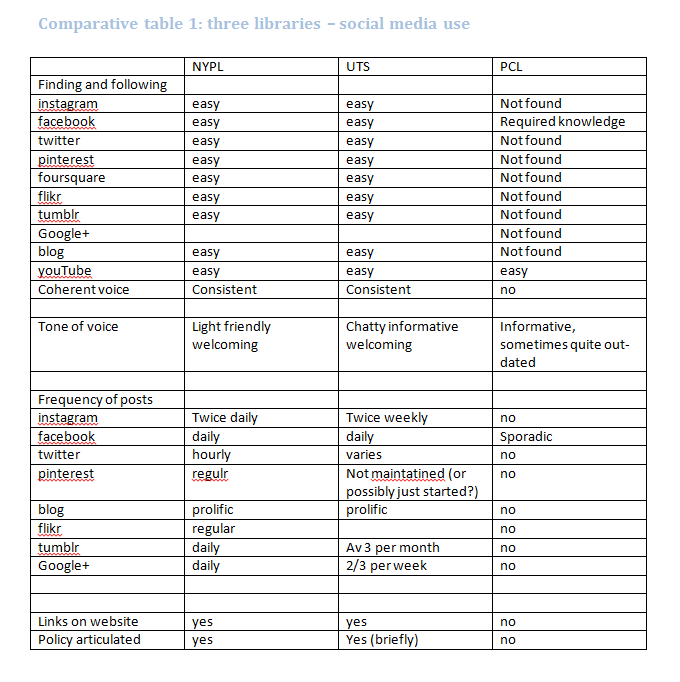In my last post is mentioned that I was going to use my local public library, Penrith City Library (PCL) to demonstrate how libraries are using social networking to meet their goals. I believe there is a compelling case for social media so I was surprised to find PCL's webpage absent any of the usual suspects...no Twitter logo, no Facebook ... no social media icons at all.
A search for PCL's social media presence produced only one easily findable site and that was on YouTube where I found an account under the username PCClibrary, with some five year old vidoes of the library moving the collection. At first I thought there was not even a facebook page because I was searching for username PCClibrary.
Eventually I found a facebook page for Penrith Children's services. This site is jarring to me as a mum - there's lots of pictures of children. I know they would have all the right permissions to have those photos up on the web but my first thought was that perhaps Twitter might be a better social media for them.
It's not just the "who's looking at those photos" factor making me leery of photos of children on the web, it's the psychological impact of a generation growing up without anonymity. In an era where 94% of UK parents post pictures of their kids online (Dockterman, 2013, para 3) are we bringing up a generation who will have fewer choices about who they want to be as adults because their identity has already been created for them ... online ... by their parents?
Turns out the Children's services page was not the PCL Facebook page. I did, after a conversation PCL's very helpful Communication Librarian find their page. This is an argument for coherence of online identity, my poor searching skills aside, their Youtube page handle PCCLibrary was easier to find than PCL handle. It's an interesting feed so why make people hunt for it? The post on Australia Day with a delicious recipe for TimTam cake has a caption with a typo in it, not a good look really.
One thing is clear this library is struggling with its social media presence.
I contacted the council to find out if the lack of social media presence was intentional, that's how I got in touch with the Communications librarian who was very interesting and happy to chat via email - librarians are great aren't they?! In my experience as a user if you ask them a question they always go above and beyond to be helpful.
He supplied a copy Penrith City Council's social media policy. I don't think I'm breaking any confidence when I reveal it seems that in order to maintain control and protect council interests/privacy, this document contains a raft of prohibitions and very few liberties culminating in:
any external or internal communication that is likely to be seen by 500 people or more must be authorised by the Principal Communications Officer (Penrith City Council Social Media Policy, 2012, p. 8).
The tenor of the document is prescriptive and prohibitive rather than innovative and outward-looking. I understand that local government has a duty of care to its citizens and to privacy. I understand my own limitations in regards to context and the machinations of local government, I don't have even half the story here. This understanding did not mitigate my surprise at the apparent desire for control that stifles innovation in the area of social media interaction on behalf of the library.
This highlighted to me the importance of buy-in. To be innovative libraries need engaged, switched-on, enthusiastic staff. They need forethought and strategic planning that reflects their goals/mission and they need to be trusted.
Docterman, E. (2013, Sept). Should parents post pictures of their kids on Facebook? Time.
Corporate Leadership Team. ((2012). Penrith City Council social media policy. Penirth: Penrith City Council.



